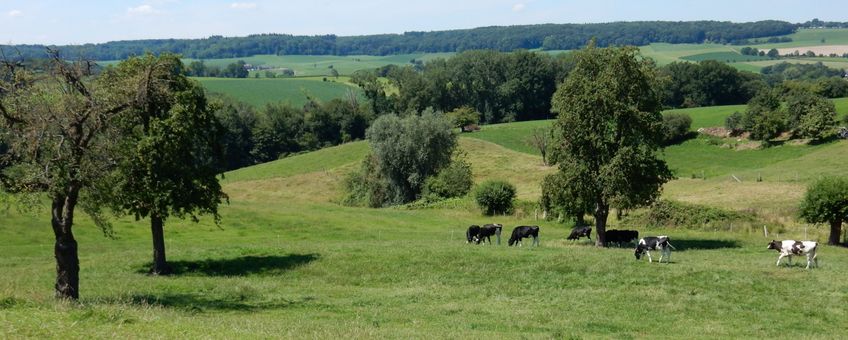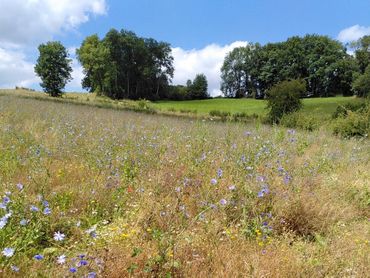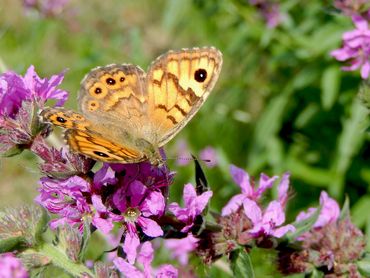
Bringing together Agriculture and Biodiversity
Dutch Butterfly Conservation, Wageningen University & Research Last week marked the start of a five-year EU project with 21 partners from 15 countries. More than 50 participants gathered online to kick off the project, that is led by Wageningen University. Showcasing synergies between agriculture and biodiversity is its mission. The problem of declining populations of farmland birds and butterflies, amongst others, lies not so much in a lack of knowledge about measures to restore biodiversity. The heart of the problem is rather that the solutions often do not match well with the motivations and possibilities of the farmers. Moreover, the current practice relies too much on a top-down implementation of regulations, without allowing the stakeholders – besides farmers also many other people caring for the countryside – to contribute their ideas. This has not produced the intended result. By adopting a participative approach right from the start, we should be able to do better. Farmers can indicate what appeals to them or hampers them to make room for biodiversity. By capitalizing on ecosystem services, such as pollination, soil amelioration and pest control by natural enemies, farmers may also benefit.
Last week marked the start of a five-year EU project with 21 partners from 15 countries. More than 50 participants gathered online to kick off the project, that is led by Wageningen University. Showcasing synergies between agriculture and biodiversity is its mission. The problem of declining populations of farmland birds and butterflies, amongst others, lies not so much in a lack of knowledge about measures to restore biodiversity. The heart of the problem is rather that the solutions often do not match well with the motivations and possibilities of the farmers. Moreover, the current practice relies too much on a top-down implementation of regulations, without allowing the stakeholders – besides farmers also many other people caring for the countryside – to contribute their ideas. This has not produced the intended result. By adopting a participative approach right from the start, we should be able to do better. Farmers can indicate what appeals to them or hampers them to make room for biodiversity. By capitalizing on ecosystem services, such as pollination, soil amelioration and pest control by natural enemies, farmers may also benefit.
 But biodiversity also needs to become more visible. Farmers can participate in this, as well as citizen scientists. Dutch Butterfly Conservation has experience in this field: her volunteers collect hundreds of thousands of butterfly records each year, producing reliable trends about changes in butterfly populations. Elsewhere in Europe, butterfly monitoring is expanding as well. In the project, both farmers and volunteers will be encouraged to count butterflies and bees on farmland to provide evidence about farming practices that benefit not only farmers but also biodiversity. The EU project will put this collaboration into practice and study it in ten countries. In the Netherlands, this will take place in the southernmost hilly countryside surrounding the river Geul, where habitat restoration for butterflies and bees is already underway. Here, the approach of the Delta Plan for Biodiversity Recovery is being implemented and bee monitoring is taking place to evaluate biodiversity impacts. The EU project builds on this initiative and will not only broaden the scope on biodiversity but also consider impacts on crop yields and financial benefits and costs for the farmer. The challenge is to achieve that after five years this approach will provide an example how farmers, citizen scientists, researchers, public authorities and other parties can work together to improve biodiversity in the countryside.
But biodiversity also needs to become more visible. Farmers can participate in this, as well as citizen scientists. Dutch Butterfly Conservation has experience in this field: her volunteers collect hundreds of thousands of butterfly records each year, producing reliable trends about changes in butterfly populations. Elsewhere in Europe, butterfly monitoring is expanding as well. In the project, both farmers and volunteers will be encouraged to count butterflies and bees on farmland to provide evidence about farming practices that benefit not only farmers but also biodiversity. The EU project will put this collaboration into practice and study it in ten countries. In the Netherlands, this will take place in the southernmost hilly countryside surrounding the river Geul, where habitat restoration for butterflies and bees is already underway. Here, the approach of the Delta Plan for Biodiversity Recovery is being implemented and bee monitoring is taking place to evaluate biodiversity impacts. The EU project builds on this initiative and will not only broaden the scope on biodiversity but also consider impacts on crop yields and financial benefits and costs for the farmer. The challenge is to achieve that after five years this approach will provide an example how farmers, citizen scientists, researchers, public authorities and other parties can work together to improve biodiversity in the countryside.
Text: Michiel Wallis de Vries, Dutch Butterfly Conservation & David Kleijn, Wageningen UR
Photos: Kars Veling; Femke Kleisterlee
